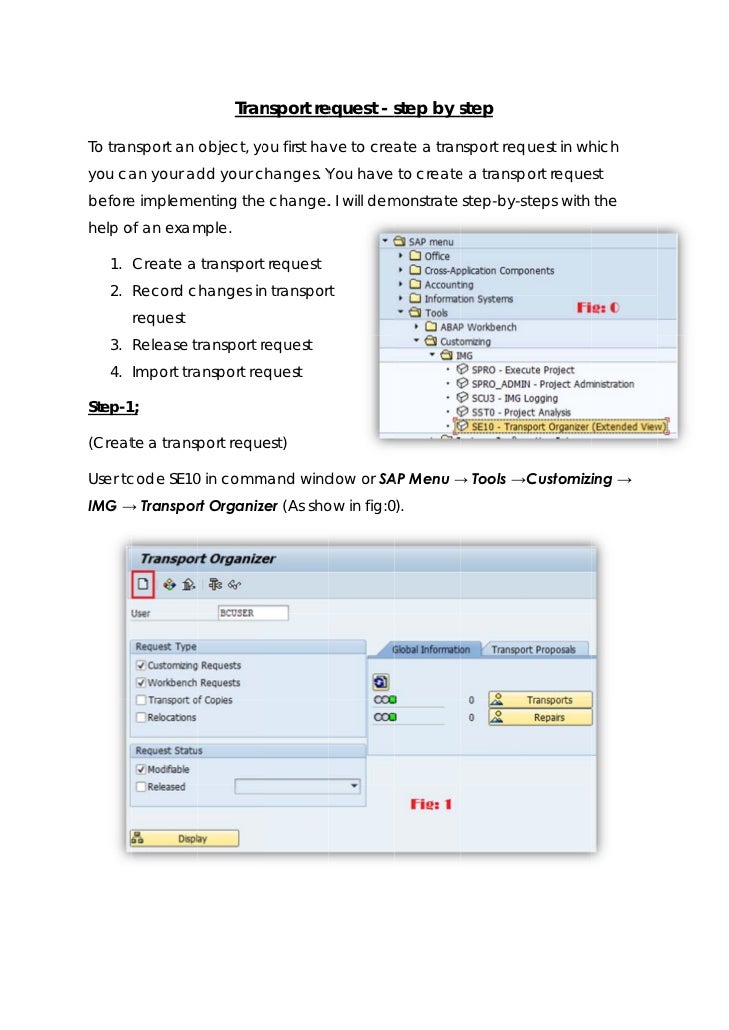If you want to test your software changes in one system without having them transported automatically to other systems in your transport track, you can create a transport of copies. Transports of copies are not transported across your system landscape, and so are not imported into your production system. This means that you can use them to test your developments.
Note
Transports of copies can be created for a non-ABAP system only if SAP Note 1293449 has been applied in your system.
Recommendation
The steps are: 1. Create new SAP client. Export SAP client from source system. Import to target client. Post Processing. Below are step by step to export SAP client: 1. Login as superuser to client you want to export. Go to Tools - Administration - Administration - Client Administration - Client Transport - Client Export. 1484719: Retrofit - Retrofit failed because of RFC-Destination: 1410010: Normal Correction SDMJ with both ABAP and non-ABAP requests: 1388112: ChaRM: Create Transport of Copies in ChaRM - SolMan side. Step 1: Goto SE09 – Create Request – Select Transport of Copies Step 2: Give Description for TOC,target system as RB2.100 / PS2.100 – click Save Step 3: Right click on TOC created above, and click on “Include Objects”.

Proceed as follows to create a transport of copies: For a project in the upper screen section, select the Transports tab in the lower screen section. Select a transport request and choose Create Transport of Copies.
Use transports of copies to transport changes to the quality assurance system. Doing so has the following advantages:
Repository objects are locked for as long as possible in the development system.
The number of transports in production is reduced. which means that the required import time is reduced and any potential downgrade risks are minimized.
Transports of copies are periodically imported into the quality assurance system but do not follow the transport routes into follow-on systems.
Only the original transports can reach production.
In transaction RSA1 --> Trasnport connection you have the possibility to collect all sourcesystem dependent objects for a specific sourcesystem. Useful in case you need the same objects but for a different sourcesytstem.
STEPS to create the transport request:
- RSA1 -> Transport Connection
- Set 'Collection mode' to 'Start manual collection'
- Select 'Source system assignment' button (left of the 'Conversion' button);
- Select the Source Systems for which to save the Source System Dependent Objects
- Set 'Grouping' to 'Save for System Copy'
- In the leftmost column click on 'Object Types'
- Expand tree 'Source System' LSYS
- Double click on 'Select objects'
- Select the Source Systems you want to collect objects for (the source system is now displayed in the rightmost column);
- Select the Collection button 'Gather Dependent Objects (this may take some time);
- Right click on the root of the tree and select 'Transport all below'; right mouseclick
- Expand the whole tree and check for objects locked by an other open transport request (the column 'Transport request' must be empty!);
- Select the transport button
- optional: in case you have to change the datapackage or create a directory entry: mass assignment to a package can be done by selecting the datapackage buton
- A transport request is created.
Caution: Check the object list of the transport to make sure that it contains all necessary objects. - Release the request
- Adjust RSLOGSYSMAP as appropriate prior to import into the Target System.


Sap Transport Of Copies

Sap Transport Of Copies Process
Remark: This transport request can be created in any BW system
If the transport BW source system and the transport BW target system delivers the very same datasources, this does not make a difference. However...
... if the transport BW target system delivers additional datasources, the corresponding transformations would be lost.
... if the transport BW source system delivers additional datasources, this would lead to import errors later
